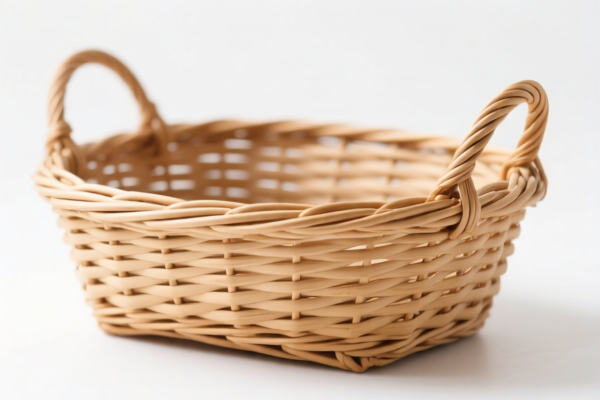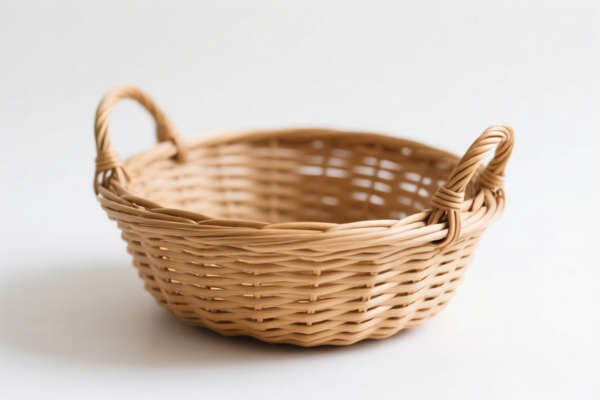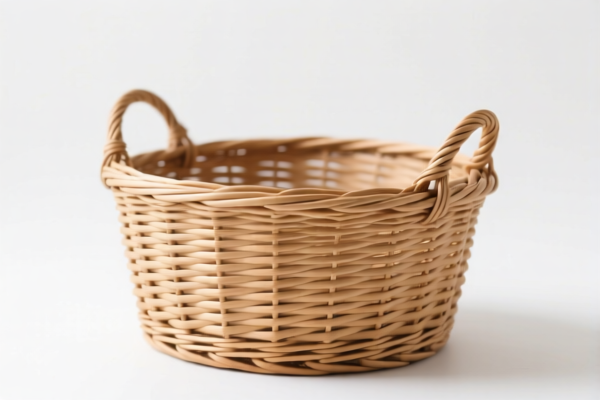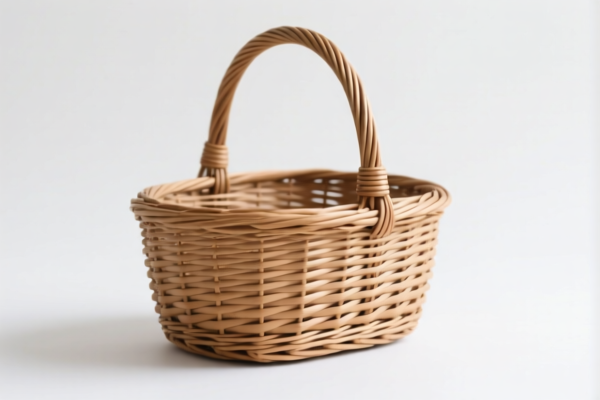| HS Code | Official Doc | Tariff Rate | Origin | Destination | Effective Date |
|---|---|---|---|---|---|
| 4602190500 | Doc | 60.0% | CN | US | 2025-05-12 |
| 4602191200 | Doc | 60.8% | CN | US | 2025-05-12 |
| 4601294000 | Doc | 58.3% | CN | US | 2025-05-12 |
| 4601296000 | Doc | 59.8% | CN | US | 2025-05-12 |
| 6701003000 | Doc | 59.7% | CN | US | 2025-05-12 |
| 6701006000 | Doc | 59.7% | CN | US | 2025-05-12 |
| 6702906500 | Doc | 54.5% | CN | US | 2025-05-12 |
| 6702903500 | Doc | 39.0% | CN | US | 2025-05-12 |
| 8304000000 | Doc | 33.9% | CN | US | 2025-05-12 |
| 9403999061 | Doc | 55.0% | CN | US | 2025-05-12 |
| 6304993500 | Doc | 41.3% | CN | US | 2025-05-12 |
| 6304996040 | Doc | 33.2% | CN | US | 2025-05-12 |
| 9404909670 | Doc | 37.3% | CN | US | 2025-05-12 |
| 1301909190 | Doc | 37.5% | CN | US | 2025-05-12 |




Woven Basket
A woven basket is a container traditionally constructed from pliable plant materials, often used for carrying, storage, or decorative purposes. The art of basketry is a globally widespread craft with a long history, predating pottery in many cultures.
Materials
Baskets are created from a diverse range of natural materials, influencing their strength, durability, and appearance. Common materials include:
- Reed: A strong, flexible plant fiber, frequently used for larger, more structural baskets.
- Willow: Known for its flexibility and ease of bending, ideal for creating intricate patterns.
- Rattan: A vine-like plant providing a durable, often dark-toned material suitable for furniture and robust baskets.
- Bamboo: A fast-growing grass offering strength and lightness.
- Seagrass: A resilient, water-resistant material often used for storage baskets.
- Wicker: A general term referring to woven materials, often willow or rattan.
- Other Fibers: Pine needles, grasses, vines, bark, and even synthetic materials like plastic or metal wire can be utilized.
Purpose & Function
The primary function of woven baskets is containment, but their applications are varied:
- Carrying: Transporting goods, such as produce from gardens or laundry.
- Storage: Organizing items within a home, office, or workshop.
- Decoration: Serving as aesthetic objects, often used in interior design.
- Food Containment: Historically used for bread making, picnics, or serving.
- Gardening: Collecting harvested items or containing soil for plants.
- Ritual & Ceremony: In some cultures, baskets hold symbolic meaning and are used in ceremonies.
Usage Scenarios
- Household Storage: Laundry baskets, toy storage, pantry organization.
- Picnics & Outdoor Activities: Carrying food and drinks.
- Retail & Display: Presenting products in shops or markets.
- Gardening: Collecting produce, transporting plants.
- Interior Decoration: Decorative accents, wall hangings.
- Art & Craft: As a medium for artistic expression.
Common Types
Baskets are categorized by weaving technique, shape, and intended use:
- Coiled Baskets: Formed by winding a single continuous strand around a base, creating a dense, sturdy structure.
- Twined Baskets: Created by weaving two or more strands around a series of upright stakes.
- Wicker Baskets: Generally refers to baskets woven from willow or rattan, often with a rounded shape.
- Splint Baskets: Constructed from flat strips of wood or reed.
- Bolster Baskets: Long, cylindrical baskets often used for carrying firewood or other long items.
- Market Baskets: Large, sturdy baskets designed for carrying groceries or produce.
- Hanging Baskets: Designed to be suspended from ceilings or walls, often used for plants.
Woven baskets are containers typically used for storage, transportation, or decorative purposes, often crafted from natural plant fibers. The following HS codes may be relevant based on the provided information:
-
4602190500: This HS code falls under Chapter 46 – Manufacture of articles of plaiting or basketry, hat-bodies and baskets. Specifically, it covers Heading 4602 – Basketwork, wickerwork and other articles, made directly to shape from plaiting materials or made up from articles of heading 4601; articles of loofah. The Subheading 4602190500 refers to “Of vegetable materials: Other: Fishing baskets or creels”. This code is applicable if the woven basket is specifically designed for fishing. The total tax rate is 60.0%, comprising a 5.0% base tariff and a 25.0% additional tariff, increasing to 30.0% after April 2, 2025.
-
4602191200: Also within Chapter 46, Heading 4602, this Subheading 4602191200 covers “Of vegetable materials: Other: Other baskets and bags, whether or not lined: Of willow”. This code applies to woven baskets and bags made from willow. The total tax rate is 60.8%, consisting of a 5.8% base tariff and a 25.0% additional tariff, rising to 30.0% after April 2, 2025.
-
6304993500: This HS code is under Chapter 63 – Other made up textile articles; sets for kitchen or dining table; linen, damask, table cloths, napkins; articles of bedding, bath, kitchen, toilet and household textile; towels. Specifically, it covers Heading 6304 – Other furnishing articles, excluding those of heading 9404. The Subheading 6304993500 refers to “Other: Not knitted or crocheted, of other textile materials: Other: Of vegetable fibers (except cotton): Other (899)”. This code may be applicable if the woven basket is considered a furnishing article made from vegetable fibers other than cotton. The total tax rate is 41.3%, with a 11.3% base tariff and a 30.0% additional tariff after April 2, 2025.
-
6304996040: Also within Chapter 63, Heading 6304, this Subheading 6304996040 covers “Other: Not knitted or crocheted, of other textile materials: Other: Other Other: Other (899)”. This code may be applicable if the woven basket is considered a furnishing article and does not fall under more specific classifications. The total tax rate is 33.2%, consisting of a 3.2% base tariff and a 30.0% additional tariff after April 2, 2025.
Customer Reviews
No reviews yet.